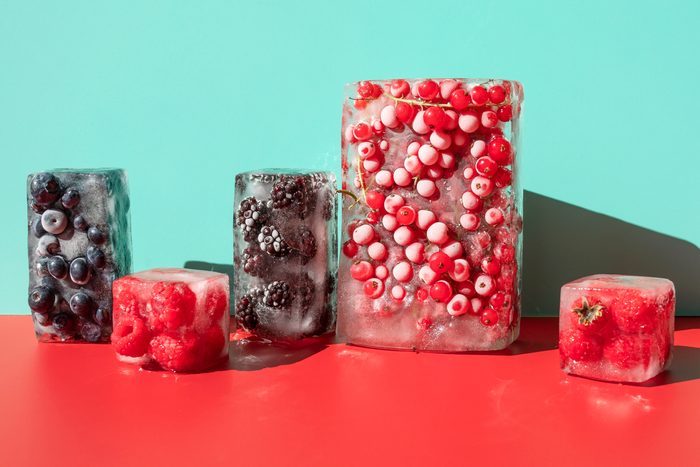
The best frozen foods you’ll want on hand
The best frozen foods are just as much a godsend for professional chefs as they are for home cooks. Trust me—I’ve been cooking professionally since 2002, I’ve written multiple cookbooks and my freezer is perpetually packed to the gills with more than just ice cream. (Though there is a lot of ice cream.)
And here’s a food fact you may not realize: Just because a food is frozen doesn’t mean it’s not as good as one that’s fresh. The method for freezing food industrially is far different from how you freeze food at home, so you don’t have to worry about things like freezer burn. Special flash-freezing technology allows fruits and vegetables to be “suspended in time” at peak freshness in mere minutes, or even seconds. This not only preserves flavor and texture but nutrients as well, making some frozen foods healthier than fresh.
There are many reasons for chefs to turn to the best frozen foods, both at home and on the job, from saving time and kitchen space to simply sourcing a better product. (No one wants to use inferior ingredients when making their best recipes!) Here are some chef picks for the best frozen foods you’ll want to stock up on. Now the only thing you’ll need to learn is how to organize your freezer with all these new items!
Get Reader’s Digest’s Read Up newsletter for more food tips, humor, cleaning, travel, tech and fun facts all week long.
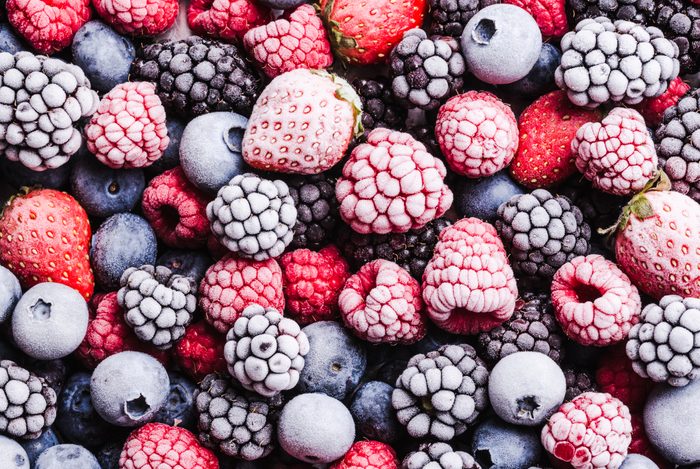
Berries
The season for fresh berries is short, which is why frozen berries are such a good buy. Not only are they preserved at the peak of freshness, but they also can be easier to cook with in their frozen state. “I bake with frozen berries because they are so easy to add to batters without getting mushy,” says Megan Moore, a private chef and the owner of Butter & Alchemy in Maplewood, New Jersey. “You do need to fold in the berries directly from the freezer or they get wet, but the flavor and sweetness are peak season. They are also consistently sized, so they are really perfect for things like muffins, quick breads or pancakes.”
Just be aware that while freezing preserves the flavor of strawberries, raspberries, blackberries and blueberries, it deteriorates their structural integrity. When water freezes into jagged ice crystals, it shreds their delicate cellular structures like tissue paper. So if you’re buying berries to use whole, like for decorating cakes or tarts, it’s best to spring for fresh. And in that case, use a vinegar fruit wash to make them last longer.
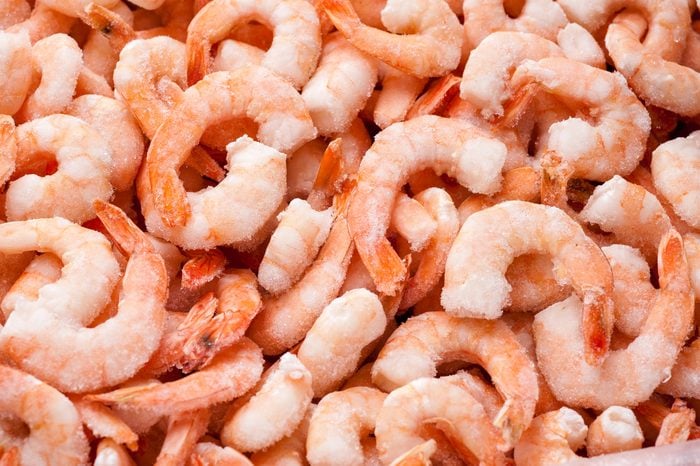
Shrimp
When it comes to buying shrimp, frozen almost always beats fresh. Unless you live in a coastal shrimping community where you’re able to buy your crustaceans directly from the docks, nearly all the shrimp you’ve ever encountered has been individually quick-frozen (IQF) directly on the boat shortly after being caught. Fresh raw shrimp quickly degrades in quality as it sits, so by running them through a blast chiller almost immediately, their flavor, texture and freshness are preserved.
As for the “fresh” shrimp you see on ice at the fish counter? It’s more than likely previously frozen shrimp that’s been fully thawed. In some cases, thawed shrimp may be treated with chemicals like sodium tripolyphosphate, which causes it to absorb water so it looks plumper and fresher—and so it will weigh more when put on the pricing scale. One word of caution: According to chef Cynthia Valles of San Pablo Street Tacos in Baltimore, you should always check the ingredients list when buying frozen shrimp. The only thing that should be listed there is (of course) “shrimp.”
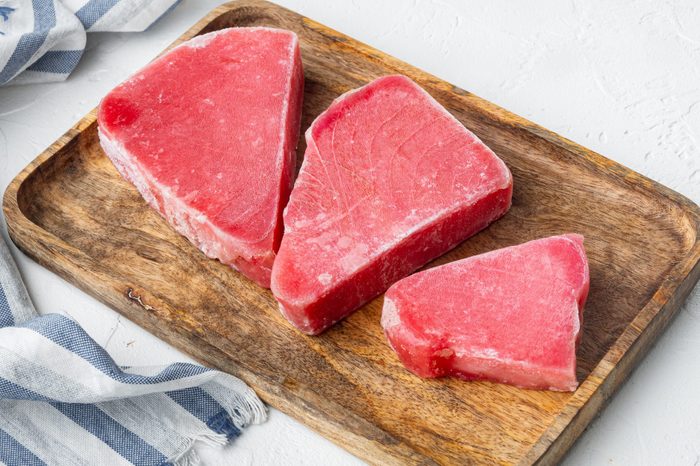
Fish
Just like shrimp, much of the fish you’ll find at the seafood counter isn’t as “fresh” as you think. “Many popular seafood picks like scallops, Chilean sea bass, tuna and swordfish are all flash-frozen on the boat, so I always buy them frozen instead of thawed out at the fish counter,” says Moore. “Also, you never want to double-freeze fish, because the texture changes and it becomes gluey. Buying frozen fish means you don’t need to cook it immediately. If you’re not planning to prepare your fish the same day you bring it home from the market, you’re better off buying it frozen.”
Another major plus: Buying frozen is a good way to support sustainable-fishing practices. Many frozen fish products come from fisheries that follow strict sustainability guidelines to maintain the fish population and reduce the impact on marine ecosystems. Look for frozen fish with certification labels, such as the Marine Stewardship Council (MSC) or Aquaculture Stewardship Council (ASC), so you can be sure they were sourced from sustainable fisheries or responsible aquaculture operations.

French fries
We all know fast-food chains like Burger King, Wendy’s and McDonald’s use frozen french fries, but if you peek into most restaurant kitchens, you’ll find many chefs do too! Making french fries from scratch is a lengthy process. First, potatoes need to be cut and soaked in water to remove excess starch. Next, they’re fried (or blanched) for a few minutes in 350-degree oil, which cooks the potatoes through and leaves them pillowy soft. After that, they’re fried once more in oil that’s 375 degrees, which gives them their crispy, golden-brown exterior. Frozen french fries have already been pre-cooked, so when it’s time to eat, all that needs to be done is that quick final fry.
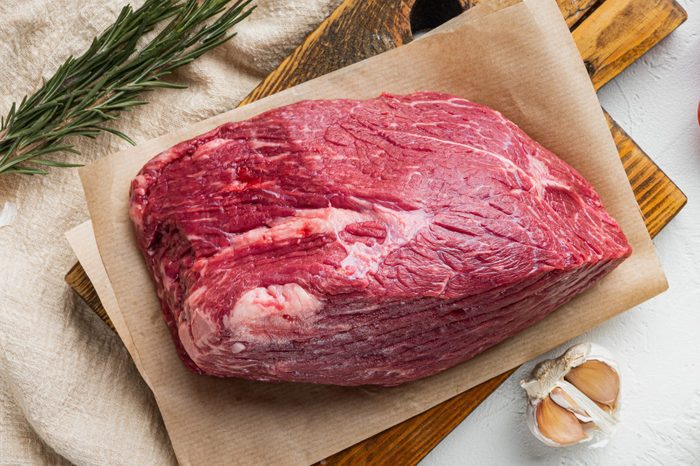
Large cuts of beef, pork and lamb
Just like Costco shoppers, chefs like purchasing large quantities of meat to save money. When it comes to steaks and chops, they call the butcher, but for cheaper, braise-able cuts of meat like pork shoulder or beef brisket, it’s fine to go frozen. In fact, it can even have some benefits beyond longer storage. As the water in meat freezes, it expands, solidifying into ice crystals with jagged edges that break down muscle and connective tissues. This can help tenderize tough cuts of meat that require low and slow cooking if they’re going to stand a chance of being chewable.
Plus, of course, you’ll have these ingredients on hand when you need them. “I prefer to buy certain meats frozen versus fresh because I don’t know if I’ll use it before it expires,” says Ciro Coppola, a chef at Bacco Italian & Wine Bar in Baltimore. “I’m also not sure how long food has been sitting in the food company warehouse.”
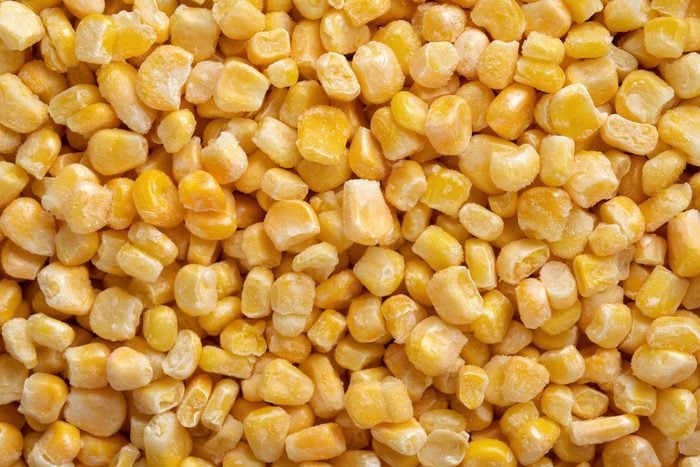
Corn
Believe it or not, corn is a food that’s quite often better frozen than fresh. That’s because corn loses flavor and nutrients as it sits at room temperature. So depending on whether it’s in season, by the time it’s gone from the farm to the market to your kitchen, fresh corn might pale in comparison to the frozen kind.
“I love frozen corn because it’s always sweet and already cleaned,” says Moore. “It’s frozen so quickly, it isn’t starchy. I make pantry dinners like a canned black bean and frozen corn salad with a fresh lime pimentón vinaigrette. Add some fresh elements like a little red onion and chopped red bell pepper, and it tastes like you spent all day cooking! I always make a big batch—it tastes even better the next day, so it’s great for meal prep and make-ahead lunches.”
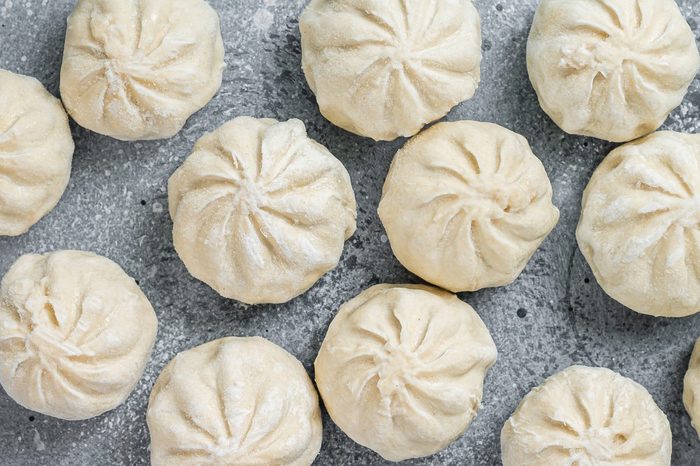
Dumplings
Making dumplings from scratch is something many chefs would rather do at work than at home. Not only that, but air-frying a bag of frozen dumplings is a lot faster than takeout! “I use frozen dumplings to make a chicken soup with bok choy, frozen broccoli and ginger,” says Moore. “Dress the bowls with Sriracha, soy sauce and sesame oil. Everyone loves them! It’s faster than takeout and really delicious if you have a cold.” Having these items on hand will also help you when meal planning—and when you forget to figure out your menu for the week.
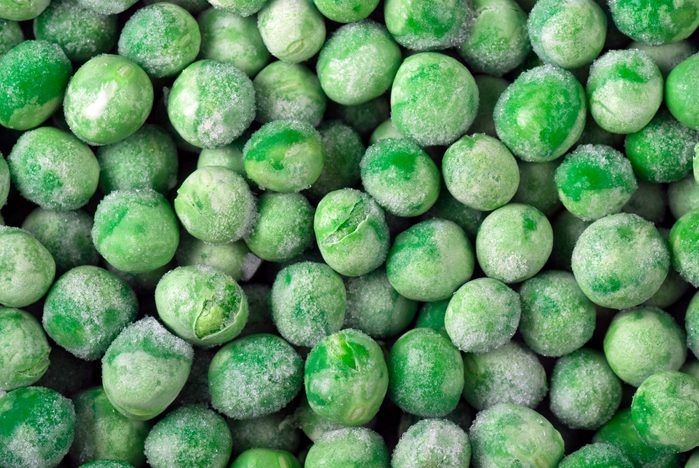
Peas
You’ll rarely, if ever, find fresh peas at the supermarket, nor would you want to. These delicate pulses have a short shelf life once picked, so by flash-freezing peas shortly after harvesting, they can make it to market without losing an ounce of quality.
“Frozen peas are one of the rare things that generally taste better than fresh,” says Moore. “They are so sweet and plump. I love adding them to pastas, stir fries and pot pies. They are also amazing as a simple salad when thawed, tossed with lemon zest, parmesan and olive oil, and served cold.” That one will go great with your burgers and other grilling recipes!
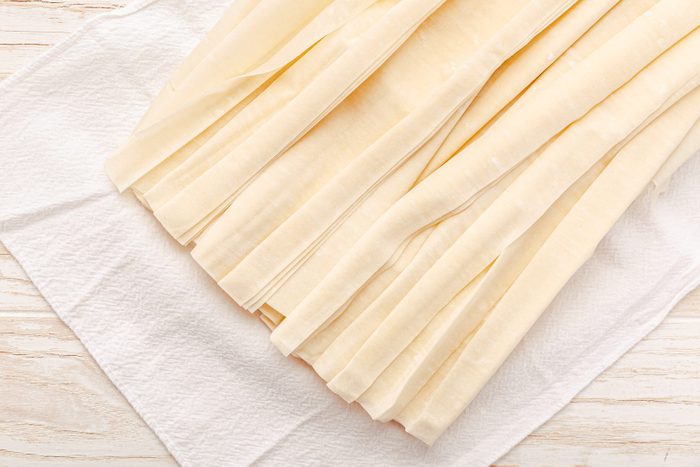
Filo dough
It’s rare that you’ll find a chef or baker who makes their own paper-thin filo dough from scratch. “I love filo, and it’s super easy to use,” says Moore. “Thaw it slowly in the refrigerator or on the counter—the thin sheets will crumble if it’s not thawed correctly and will dry out if you don’t keep the dough covered while not actively working with it. But as long as your ingredients and tools are ready to go, building a spanakopita from scratch can be done in about 30 minutes. You can use frozen filo to make all sorts of sweet and savory dishes, and the thin layers of crispy dough are always impressive.”
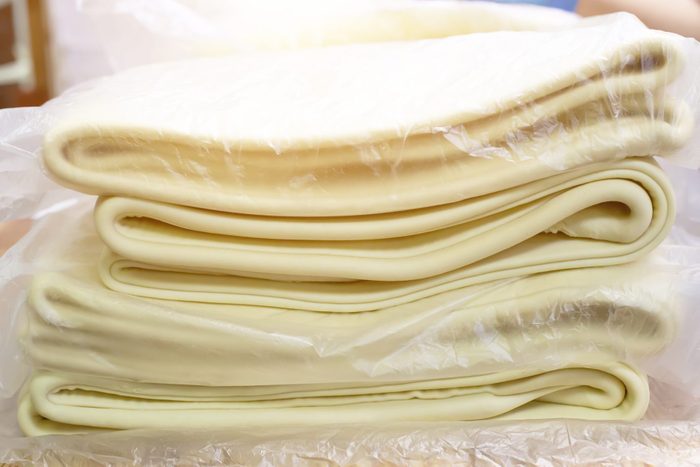
Puff pastry
Any chef can tell you that making puff pastry by hand is a long, laborious process, which is why many of them prefer buying it frozen. But there is an important caveat: It must be made with real butter, not oils or shortenings. Without butter, frozen puff pastry is nearly flavorless, which can lead to disappointing results when using it in recipes. All-butter puff pastry, however, is often better than homemade, since industrial rolling machines ensure every layer of butter is equal and even.
“I love it to make hand pies, like barbecue pulled chicken and cheddar with sautéed onions, or a chicken pot pie,” says Moore. “Use a sharp knife or pizza cutter and cut straight down so it rises high and even.”

Stock
When considering which frozen foods to buy, think of the foods chefs like to freeze themselves. “We keep our stocks and sauces like birria consommé frozen, because they’re time-consuming to make,” says Valles. Making a large amount of stock from scratch can use up every burner in a small restaurant kitchen, so leaning on freezers is key to having excellent stock to cook with later on instead of relying on canned or powdered stocks and broths. And yes, you can buy frozen stock or condensed frozen stock bases that you can constitute. They’re total game-changers.
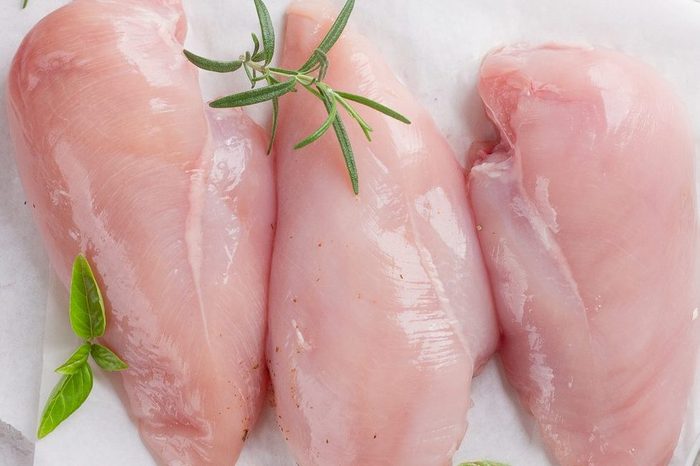
Chicken breasts
Chicken is by far the most popular meat in America—and one of the most popular frozen foods too. Frozen chicken breasts thaw quickly and cook quickly, so by keeping them stockpiled in your freezer, you’ll always have an answer when someone in your house asks, “What’s for dinner?” And you won’t have to worry about using them up before they go bad in the fridge.
“Frozen chicken is the main thing I buy because so many people love it,” says Moore, who says that frozen chicken cooks and tastes just as good as fresh. With no drop in quality, this is one of the best frozen foods to always keep on hand for quick and easy dinners. “For meal prep, thaw chicken breasts, marinate and grill for fast meals that taste good. With basic pantry or freezer items, you can do tacos, salads or even dice it and add to risotto. There are so many different ways to make a meal.”
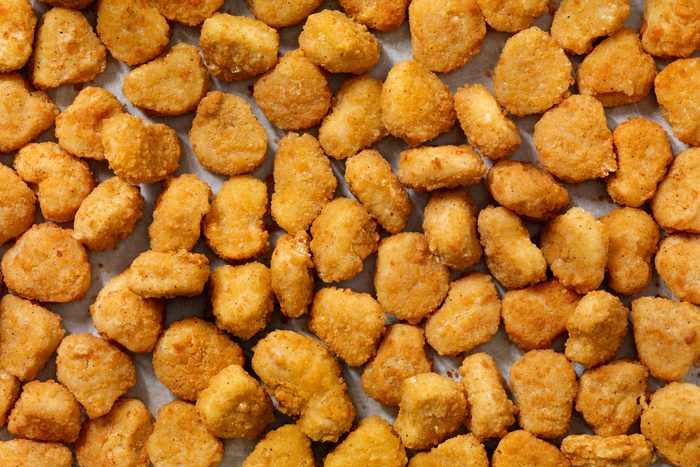
Chicken nuggets
As a culinary professional who’s also the mother of two teenage boys, allow me to share a universal truth: All children prefer frozen chicken nuggets to homemade, which is why most restaurants buy them as such. It doesn’t matter how much work you put into making them from scratch or if you use any secret ingredients. This is not what kids (or most adults) want—which is finely ground chicken molded into nugget shapes, dipped in batter and deep-fried till golden. And even if you do make outstanding chicken nuggets at home, your kids most certainly will not appreciate them … and they’ll probably complain that they’re “not the same” as their favorite. So just do what the chefs do: Buy them frozen, save yourself the headache and have a peaceful meal.
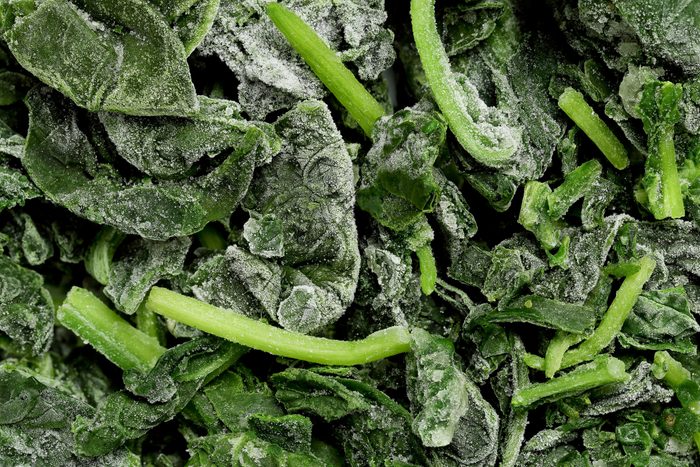
Spinach
If you’ve ever cooked fresh spinach before, you know just how much it shrinks. To end up with one cup of cooked spinach, you’ll need about 10 cups of fresh leaves! So unless you absolutely need to use it raw, like in a salad, it makes a lot more sense to buy spinach that’s already been cooked down so you can use it immediately. Frozen cooked spinach tastes as good as if you’d done it yourself, which is why chefs reach for it over and over again. Plus, even with their restaurants’ big walk-in refrigerators, they still have only so much space for spinach storage.

Bread
Everyone loves being greeted at a restaurant with warm, freshly baked bread. But here’s an insider secret: Most restaurants—even the ones that claim they bake their bread in-house every day—aren’t actually making their bread from scratch. Instead, they get loaves, rolls and breadsticks that have been partially cooked and rapidly frozen for long-term storage. When it’s time to make “fresh” bread, they put it into a hot oven to bake the rest of the way. By going with frozen over fresh, you’ll never end up with a stale slice of bread. Speaking of which, here’s what those twist ties on bread bags at the grocery store mean in relation to the freshness of a loaf.
Sources:
- Cynthia Valles, chef and owner of San Pablo Street Tacos in Baltimore
- Megan Moore, chef and owner of Butter & Alchemy in Maplewood, New Jersey
- Ciro Coppola, chef at Bacco Italian & Wine Bar in Baltimore
- New York Times: “Shrimp and Chemicals: What You Need to Know”
- Washington Post: “Buying frozen fish isn’t what it used to be. Here’s what you need to know.”
- National Institutes of Health: “Crystallization Behavior and Quality of Frozen Meat”
